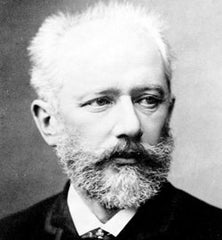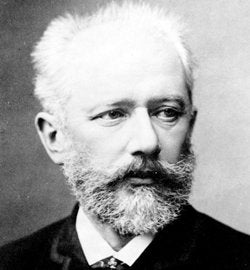 Pyotr Ilyich Tchaikovsky (1840-1893) is a well-known late-Romantic period composer from Russia. He was a precocious musician from the age of five. However, the only musical careers available at that time were as teachers or performers in the theater, neither of which were held in high esteem. Therefore, young Pyotr’s parents set him on the path to become a civil servant. While attending school, he still engaged in music with peers as a hobby, attending the opera, singing in the choir, and continuing piano lessons, but he was still encouraged to pursue a civil service career.
Pyotr Ilyich Tchaikovsky (1840-1893) is a well-known late-Romantic period composer from Russia. He was a precocious musician from the age of five. However, the only musical careers available at that time were as teachers or performers in the theater, neither of which were held in high esteem. Therefore, young Pyotr’s parents set him on the path to become a civil servant. While attending school, he still engaged in music with peers as a hobby, attending the opera, singing in the choir, and continuing piano lessons, but he was still encouraged to pursue a civil service career.
In 1862, the Saint Petersburg Conservatory opened, and Tchaikovsky left his civil service position and enrolled in the Conservatory to study composition. After he graduated three years later, he was offered a position as Professor of Music Theory at the Moscow Conservatory. Throughout his composition career, he wrote many familiar programmatic as well as absolute music works. Some of his most popular programmatic pieces (pieces that tell a story) are his Fantasy-Overture to Romeo and Juliet, his 1812 Overture, and his three ballets: Swan Lake, The Nutcracker, and Sleeping Beauty. Other popular works of his include three piano concertos, a violin concerto, and six symphonies as well as his Serenade for Strings in C Major.
The Serenade was intended for a large string orchestra: “The larger number of players in the string orchestra the more this shall be in accordance with the author's wishes,” Tchaikovsky wrote on the score. The first movement is an homage to Mozart, whom Tchaikovsky admired very much. The movement is in the form of a classical sonatina, with a slow chordal introduction at the beginning that returns at the end of the movement. The second movement is labeled Valse, or “waltz”, and contains a lilting waltz melody that has become quite popular separate from the rest of the piece. The third movement is a beautiful, lush Élégie (elegy), and the fourth movement, the Finale, has also become popular as a separate piece. This last movement contains a spirited, upbeat melody that is transferred throughout the orchestra, and concludes with a restatement of the slow introduction from the opening movement, providing a strong sense of cohesion and closure to the piece.



Leave a comment